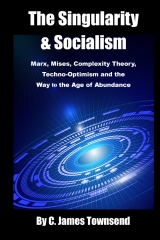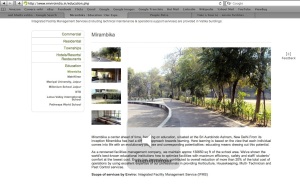In reply to an earlier post on Mar 9, 2015 Ashtar Command says: Don,
You are right that Aurobindo is usually seen as an intellectual, theoretical guy, like the Hindu version of Teilhard (who is also seen as intellectual-theoretical in this scenario). I originally thought so to, until reading M Alan Kazlev's criticism of Ken Wilber's view of Aurobindo at the "Integral World" site of Frank Visser. Aurobindo was (surprise) a mystic and yogi - Teilhard was also a mystic, although I know very little about it. Perhaps they choose to clothe their mysticism in intellectual garb as a "skillfull means" to attract, say, intellectual types like the Ashtar Command? ;-)
Another thing, unrelated to the present discussion...
Concerning Marx, yes, the first and lower stage of communism, known as socialism, should be characterized by the principle "from each according to ability, to each according to his contribution". Only in the higher stage of communism will there be "to each according to need". To Marx, this wouldn't be totalitarian, since he believed that technology could create a society of super-abundance!
OK, that was a side point. Permalink
By immersing oneself in the original works, one gets a sense of the depth, comprehensiveness and majesty of Sri Aurobindo’s being that no compilation or third-person essay can ever convey. ~ Matthijs Cornelissen (SABDA Newsletter, May 2008)
The Common Cause: Postcolonial Ethics and the Practice of ... - Page 3
https://books.google.co.in/books?isbn=022602007X
Postcolonial Ethics and the Practice of Democracy, 1900-1955 Leela Gandhi. believed that the threat of democracy was best answered through totalitarian self- development based upon the cultivation ... by the philosopher Jacques Ranciere as incorporating the following thesis: “Democratic government . . . is bad when it is ...
Collaboration, Summer 1995, "Essay - Savitri" by Rod Hemsell
But Sri Aurobindo's theory of mantra, the text of Savitri itself, and our experience, seem to support rather emphatically the notion that it is the audible sound, with its dynamics of pitch, rhythm, image, and conceptual spiritual content that has a unique potential and power to effect in the fit outward hearer the experience of which it speaks, and of which it is the living symbol.
It is to demonstrate the truth of this hypothesis, at least in part, that we have undertaken the Savitri/Agenda experiment--a series of immersion workshops in which we simply allow the Word to be heard and absorbed, in as clear and deep a manner as we can manage at the present time. And in the context and atmosphere thus created by Savitri, we turn to the Mother's Agenda with the aspiration to hear and know as profoundly and intimately as possible her experience of transformation. The effect of this attempt thus far has been overwhelmingly gratifying. And it has made dramatically clear the fact that the experience of transformation narrated by Sri Aurobindo in Savitri and by the Mother in her Agenda are one and the same. The two together create a resonance that seems to literally dissolve the membrane that separates our worlds and unite us with them in a remarkably vivid and tangible sense. Savitri (book) - Wikipedia, the free encyclopedia
If we practice Sri Aurobindo’s yoga of poetry, it can be very similar to a daily or weekly visit to the Matrimandir chamber. You can take a Canto of Savitri, or one or two short poems dealing with a certain spiritual consciousness, and immerse yourself in those poems for half an hour or an hour and you are transported into a completely different vibrational range. It can be a practice like going to the Matrimandir occasionally to become transparent. I have no doubt that Sri Aurobindo intended that. His poems are attempts to capture a certain vibration that carries a consciousness of a reality and he has concentrated on communicating these various planes and types of experience in the poems. So, we will know at a certain moment that we have received that intention. Then you can go back to it and gradually familiarize yourself with that way of seeing. And it is very specific. THE POETRY OF SRI AUROBINDO: MANTRA, METRICS AND MEANING BY ROD HEMSELL 1:03 PM
HUTA: What should the Ashramites, if they truly wish to transform themselves totally, do in order to make things easy for themselves, for others and for The Mother as well?
THE MOTHER: By definition, the Ashramite has resolved to dedicate his life to the Divine Realisation. But to be true to his resolution he must be sincere, faithful, modest and grateful in his consecration, because these qualities are indispensable for all progress, and progress, a steady and rapid progress, is indispensable to follow the pace of Nature's evolutionary advance.
Without these qualities, one may have sometimes the appearance of progress but it is only an appearance, a pretence, and at the first occasion it crumbles down.
The Mother Mirra Alfassa as a Guru Posted on August 18, 2011 - Integral Yoga of Sri Aurobindo & The Mother: Sandeep.
The Mother Mirra Alfassa was a much misunderstood Guru outside the confines of the Sri Aurobindo Ashram. Some derided her as authoritarian presumably because she supervised parades in the Ashram (these were intended to instill the discipline required for yogic transformation). Others, after reading of her intimate involvement in the day-to-day decisions of the disciples, concluded that she had turned the Ashram into a cult. Men especially had difficulty accepting an European (not to mention French) woman as a Guru. Many hasty, as well as nasty, misconceptions arise because we superficially evaluate her external behaviour based on our own preconceptions and prejudices.
A proper appraisal of her functioning as a Guru requires some patience along with a nascent psychic sensitivity to perceive the luminous consciousness behind her frontal personality.
Mirror of Tomorrow :: Integral Leadership by Anurag Banerjee 14 Jul 2011 – A question might arise: which style of leadership did Sri Aurobindo and the Mother follow? The answer would be that the Coaching Style was followed by Sri Aurobindo while the Mother followed the Authoritative Style. In the Coaching Style, the leader enables his subordinates to identify their strengths and weaknesses, helps them in their aspiration and encourages them to work for the accomplishment of their developmental aims. Sri Aurobindo’s view was: “All life is yoga”, so his followers were free to choose their own mediums of doing the integral yoga. Some adopted music as a part of their sadhana, some took up painting, some took up literary activities; those who found physical work attractive worked in the Press, laundry, gardens, bakery. So we find that every individual was given the freedom to pursue his aspiration in his own way. One may argue that since the inmates were given the freedom to select their own mediums of doing the yoga, the leadership style adopted by Sri Aurobindo could have been that of Laissez-faire. One must understand that Laissez-faire is a group-oriented leadership in which the members train themselves up and provide their own motivation and don't depend on their leader for motivation or increasing morale. But that was not the case with Sri Aurobindo. The inmates always looked upon Sri Aurobindo for motivation and encouragement. Moreover, in the Laissez-faire style, we know that delegation of authority is done at the fullest level. But neither Sri Aurobindo nor the Mother delegated absolute authority to any of the department-heads. The leaders following the “Coaching Style” provide regular feedback and encourage interaction between him and the employees; he conveys to them what he expects from them. And that is what Sri Aurobindo did. He always gave directions and advice whereas the leader following ‘laissez-faire’ would not do so.
The Mother, as mentioned earlier, followed the Authoritative Style. As a visionary, she knew what she was doing and her followers/disciples also knew what and why they were doing and how their tasks would fit into the organizational goal. To ensure that the performance of the followers were in accordance with the vision of Ashram the Mother had defined the standard around the vision and provided feedback wherever and whenever necessary. But after determining the goal, she would leave the means of achieving them to her followers with the freedom to bring in innovation. In the Sri Aurobindo Ashram, the supreme authority rested in the hands of the Mother. Though all the assets were purchased in the name of Sri Aurobindo, it was the Mother who managed everything. It was she who took all the major decisions; it was she who saw to it that her instructions were implemented. She assigned work to the inmates and also set standards for the assigned work. No deviation or alteration in the plans of action could be incorporated without her approval. All the department-heads or managers had to report to her informing her of the progress made or difficulties faced and also for her advices regarding the concerned matter. Every detail of all the service-departments was presented to the Mother for her scrutiny and approval and the department-heads executed her orders. In certain important departments like the Atelier, even for the most trivial task an expressed approval of her was required. It was she who would decide what should be done and in which order. She believed in centralization and practised it accordingly. 10:02 PM




